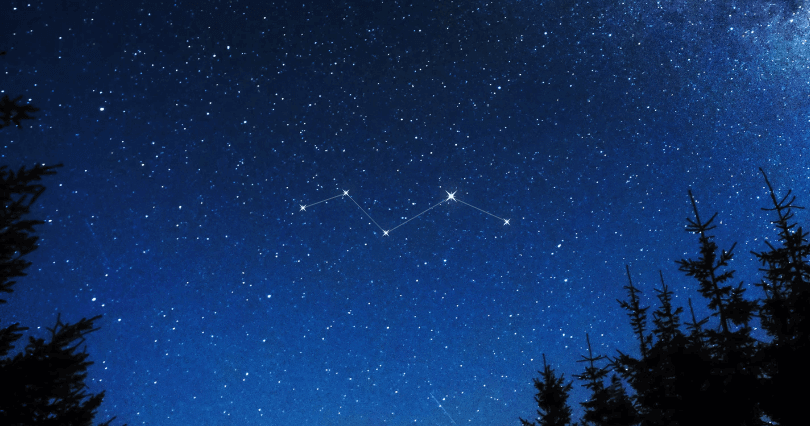Vulpecula Constellation

Vulpecula constellation, also known by name Little Fox is northern hemisphere constellations. The constellation contains no bright star and is said to be relatively inconspicuous. You may find Vulpecula between constellations Sagitta and Cygnus and can see some open clusters in it. The main star of the constellation is a red giant called Alpha Vulpeculae.
She was not known to Ptolemy since it was officially recognized and discovered in the 17th century. Compared to other modern discovered constellations, Vulpecula is associated with ancient mythology, especially Greek mythology. At first, she was called ‘Vulpecula cum ansere’ which means ‘fox with goose’, but soon after was goose discredited from constellations.
In Greek mythology, the Little Fox is connected with the tail of the fastest dog of his time, named Lailaps and fox on the island of Thebes. Gods have thrown a curse and it was impossible to capture it, but Zeus ended the hopeless hunt and place both dog and fox in the sky. The stars were later divided to form 2 separate constellations - Anser and Vulpecula but merged back together in Vulpecula constellation.
How to see Vulpecula constellation?
Vulpecula is the 55th constellation is the size and it lies in the fourth quadrant of the northern hemisphere. You can see it at latitudes between +90° and -55°. Vulpecula is bordered by constellations Sagitta, Pegasus, Lyra, Delphinus and Hercules.
The constellation is a faint one, and it doesn’t contain any stars brighter than 4th magnitude. Vulpecula is located in the middle of the Summer Triangle asterism.
Major stars in Vulpecula constellation
The constellation contains few notable sky objects like Dumbbeli Nebula (first nebula to be discovered), the elliptical galaxy NGC 7052, Brocchi’s Clusster and Messier 27. It has 4 stars with its known planets and the brightest one is Anser, Alpha Vulpeculae. No meteor showers are connected with Vulpecula.
Vulpecula belongs to the Hercules family of constellations, along with Aquila, Ara, Centaurus, Corona Australis, Corvus, Crater, Crux, Cygnus, Hercules, Hydra, Lupus, Lyra, Ophiuchus, Sagitta, Scutum, Sextans, Serpens and Triangulum Australe.
Mythology of the Vulpecula constellation
Vulpecula constellation was not named after greek mythology character since it was spotted in 1687. by Johannes Hevelius. He placed the new constellation near two others that also represent hunting animals - Aquila (the eagle) and the vulture (Lyra constellation was linked to it). He named is Vulpecula et Anser or ‘little fox with the goose’ and the name represented a fox carrying a goose the guardian of the Underworld in Greek mythology. He also invented constellation named Cerberus, which was actually a constellation of the guardian dog, but it wasn’t accepted by the astronomy community.
Fox and the Goose were later separated into two individual constellations but soon merged again by the name of Vulpecula. Its brightest star Ansar is actually a representation of the former Goose.
Another version of the myth in Greek mythology the Little Fox is the tail of the fastest dog of his time, named Lailaps and fox on the island of Thebes. Gods have thrown a curse and it was impossible to capture the fox, but Zeus ended the hopeless hunt and place both dog and fox in the sky.
Choose your package
-
Lifetime Entry in Star Catalog
-
Guaranteed visible from your location
-
Star Finder app access


-
Free & express shipping available
-
PDF Emailed in Seconds
-
Everything from a Standard Star package
-
Choose a Star Constellation
-
Easier to find in the Sky




-
Free & express shipping available
-
PDF Emailed in Seconds
-
Everything from a Standard Star package
-
Name Two Stars together
-
Extra bright and Unique 2-Star Pair






-
Free & express shipping available
-
PDF Emailed in Seconds



